I will confess that when I opened my tourist map in Sucre I was surprised. My eyes scrolled down the list of top rated tourist attractions in the city. Why on earth was the cemetery listed?
Having a taste for the macabre, I was keen to check it out. What was so great about Sucre cemetery that it had earned its spot in a tourist map?
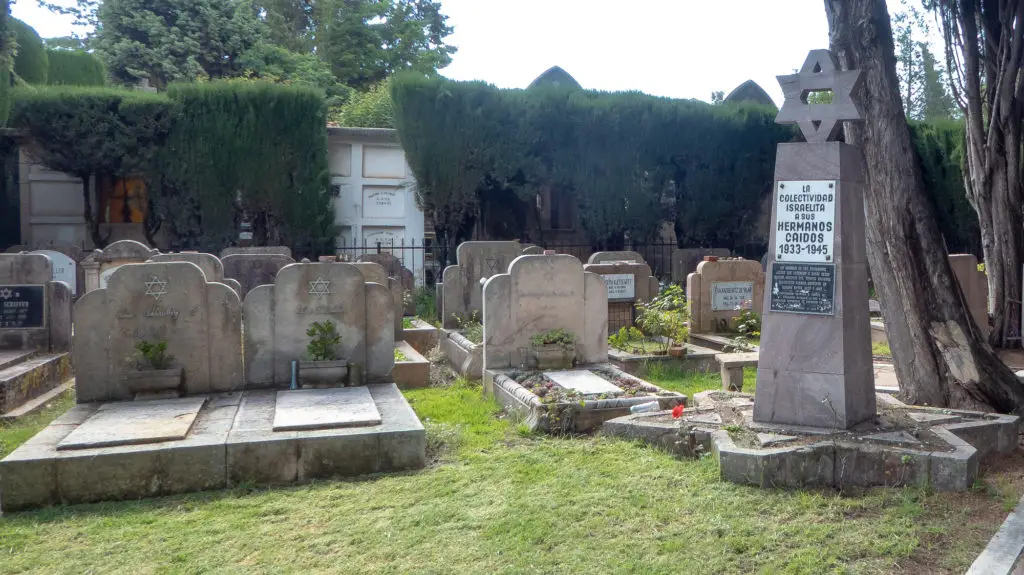
As Tim and I planned our visit to the cemetery, I began to feel a little nervous. Although I have visited places of dark tourism before, Chernobyl for example, I knew that I could meet people in the cemetery who were grieving.
Suddenly I felt that a visit here had the potential to be intrusive and voyeuristic, not at all what I was going for. However, upon questioning the inclusion of the cemetery on the map with my Couchsurfing hosts, they encouraged me to visit.
Entering Sucre Cemetery
Tim and I approached the grand entrance to the cemetery and I was surprised to see just how opulent it looks. The entrance is painted white (as is everything else in Sucre) and the arch bears the words ‘Hodie Mihi Cras Tibi’. This is literally translated to mean, ‘Today Me, Tomorrow You.’ It was odd to read such a frank statement about mortality full stop, let alone in somewhere like a graveyard.
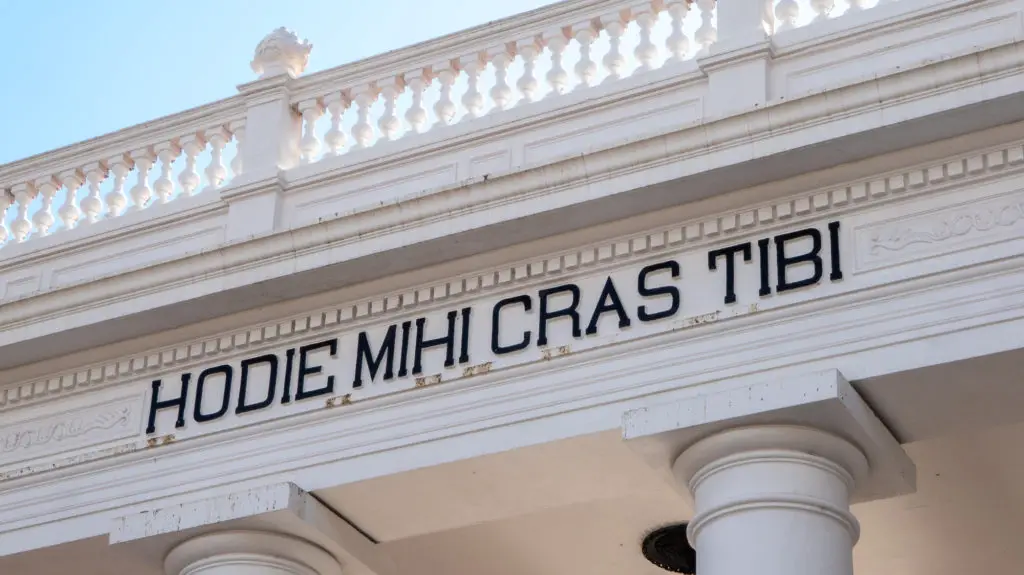
As we walked into the vast grounds of the cemetery, I was shocked to see just how immaculately kept the gardens were. The whole space was beautifully green, with pruned trees and wonderful spaces for relaxing.
I was also surprised when I noticed just how many locals were hanging out there. As well as those who were visiting departed loved ones, there was also lone teenagers studying and groups of young adults deep in conversation.
It was unlike any cemetery I had ever seen in Europe. It appears that in Bolivia and Sucre, in particular, people come to this place to escape the hustle of the streets and relax. It felt peaceful but not in an eerie or creepy way.
Despite my initial concerns that Tim and I would be intruding, the locals did not make me feel like that at all. Everyone we passed greeted us with a smile and said good morning. Considering that we were strolling around an inherently ‘sad’ place, it certainly didn’t feel that way.
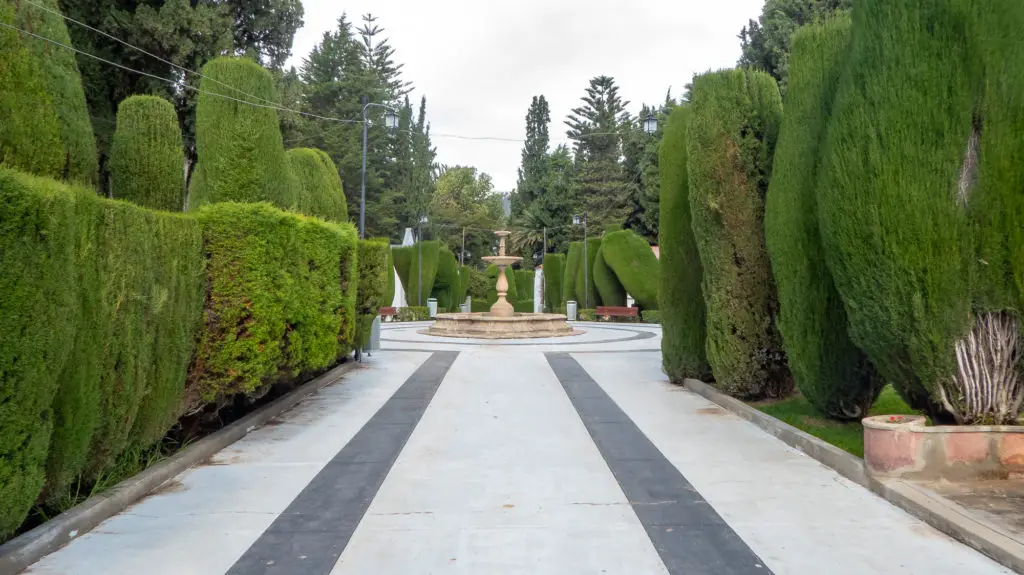
The layout
Unlike graveyards in the UK, plots are not restricted to the ground space that the land provides and instead are arranged in a block system. These are usually around 7 graves (niches) high and they tower over the surrounding gardens.
As well as bodies kept in the block system, certain notable names are given their own memorials. In Sucre Cemetery, for example, there are a number of famous people buried. Well-known Bolivian folk musician Huáscar Aparicio Gonzales has a particularly impressive statue.
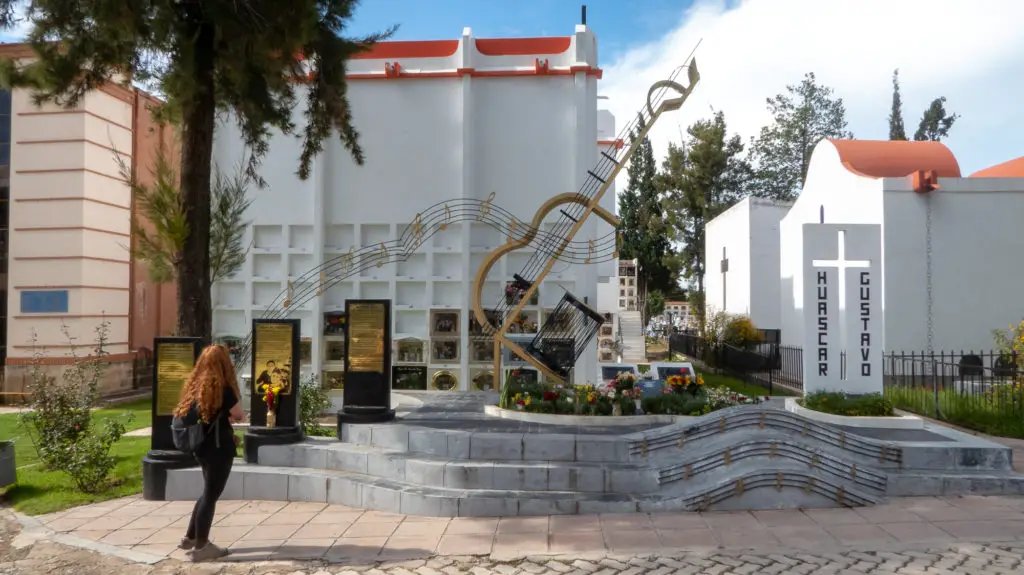
Personal touches
I was surprised to see that the graves here were highly personalised. Instead of the standard bouquet of flowers that you would expect to see adorning a British grave, there were intimate offerings from family members. These would indicate the deceased’s former hobbies or interests. Most commonly left are small bottles of alcoholic drinks or food.
Whilst I initially found it strange that you would buy a cake and leave it at somebody’s grave when they will never eat it, I later discovered that Bolivian’s believe that the deceased will return to claim their gifts.
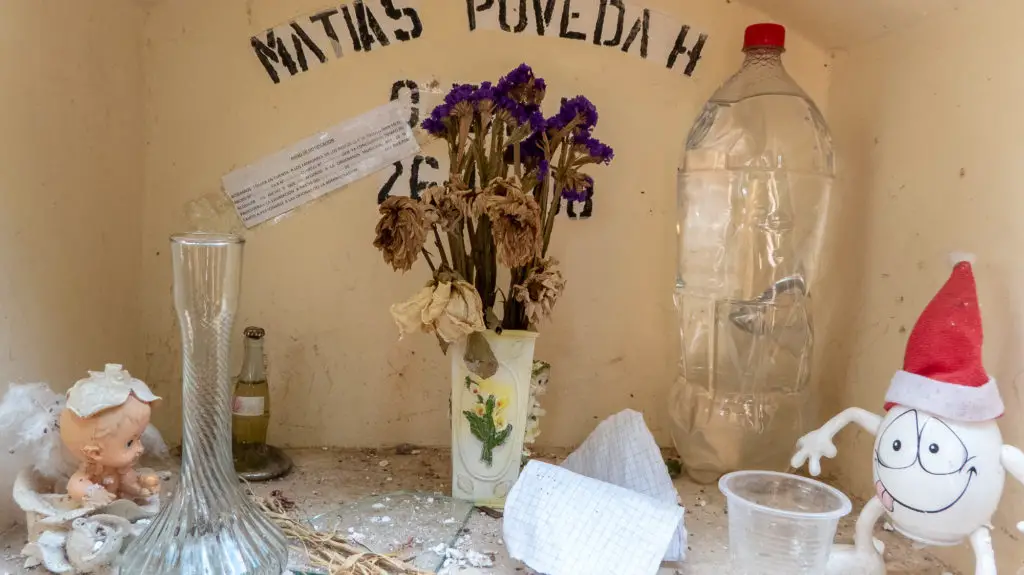
Although it struck me as unusual, there is no doubt that this personalised approach makes you realise that the name on the stone was actually a real person who is loved and missed by those they left behind.
Perhaps the most upsetting of all the graves that we saw, were the ones belonging to children. These were all kept together in their own blocks. Sometimes people would put photographs of the child at the grave along with their favourite toys or sweets.
It appeared that the majority of the graves were tended to very regularly and I couldn’t help wondering if this was something that helped people grieve.
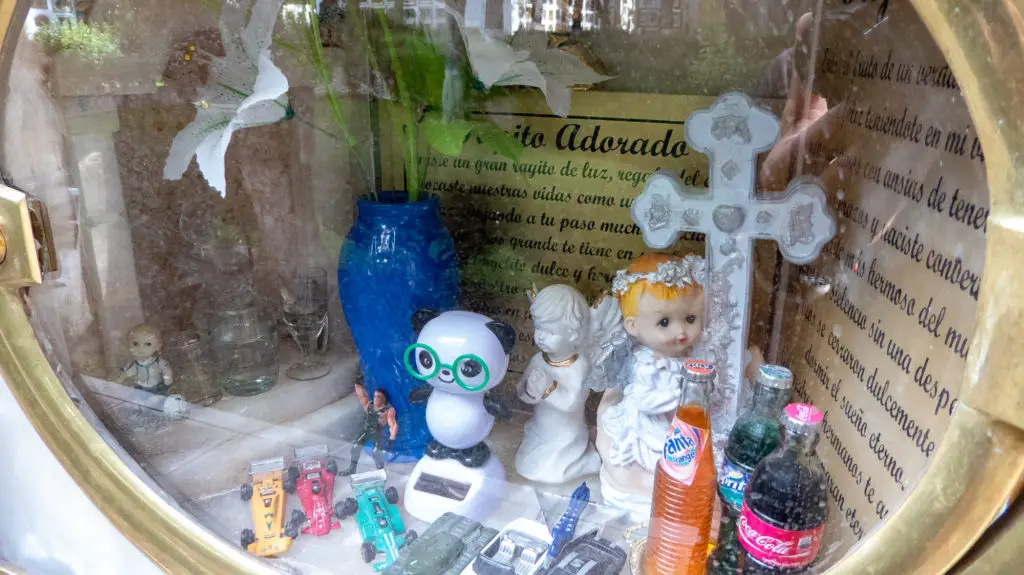
Death in South America is an open book
In western society and especially the UK where I am from, death is still very much a taboo subject which people do not enjoy talking about. In South America and Bolivia more specifically, this is not the case and death is something that is celebrated.
After having visited La Paz cemetery as well as Sucre, I was surprised to see that there, they had allowed street artists to come in and adorn the walls of the graves. In Europe, I can’t ever imagine seeing a skull graffitied in a graveyard but here, it is accepted as a reality of mortality.
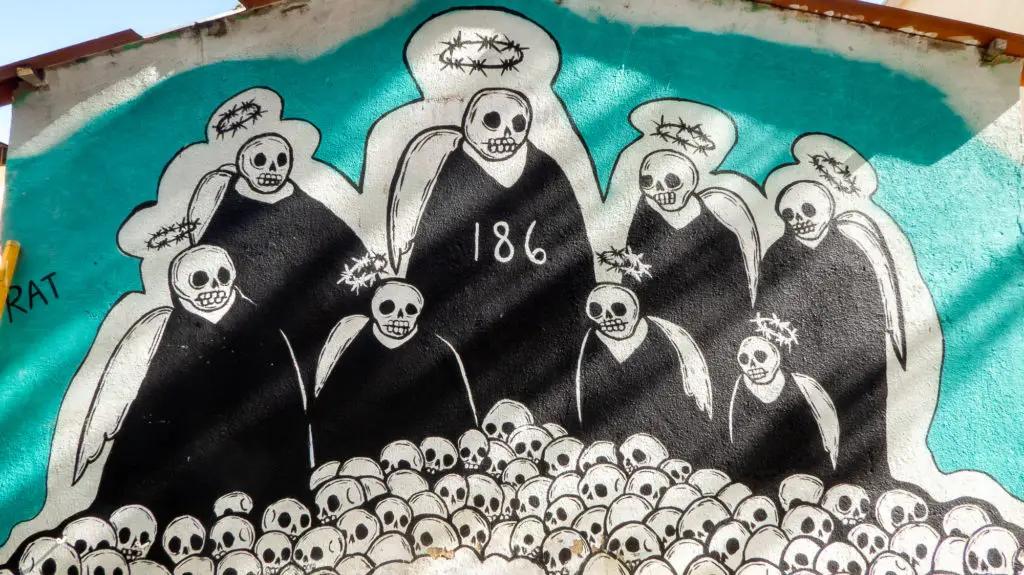
The Day of the Dead
Part of the reason for this could be because of the festivities of ‘Dia de Los Muertos’ also known as the Day of the Dead. This day is a national holiday for Bolivians and they use the celebration to come together as a family and cook a giant meal.
This will often be a special dish as they believe that the souls of their departed loved ones will return to spend the day with their family. After the meal, the family will make a trip to the cemetery where they will pray together and replenish the goods left for the deceased.
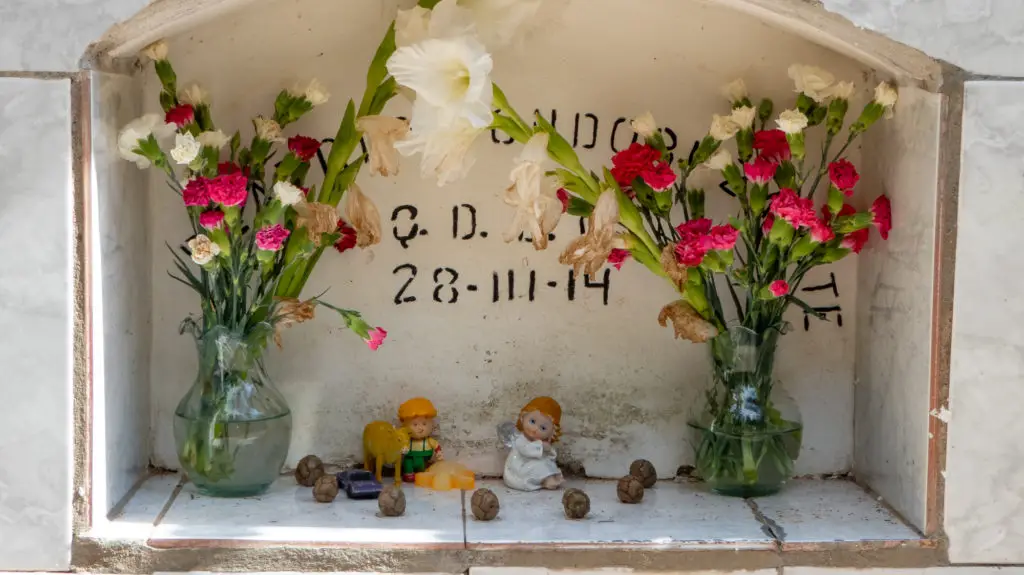
The Day of the Dead is hugely important in Bolivian society with the government using the upcoming weeks to tend to cemetery maintenance and families cleaning graves in advance to ensure everything is ready for November 2nd.
The cost of forever in Sucre Cemetery
Spending a portion of your afterlife in Sucre cemetery isn’t cheap. The minimum rental time for a niche is four years although this can be extended for another three. For one of the horizontal plots in a block, expect to pay $10,000 for a seven-year rental. This is the maximum time a niche can be leased for.
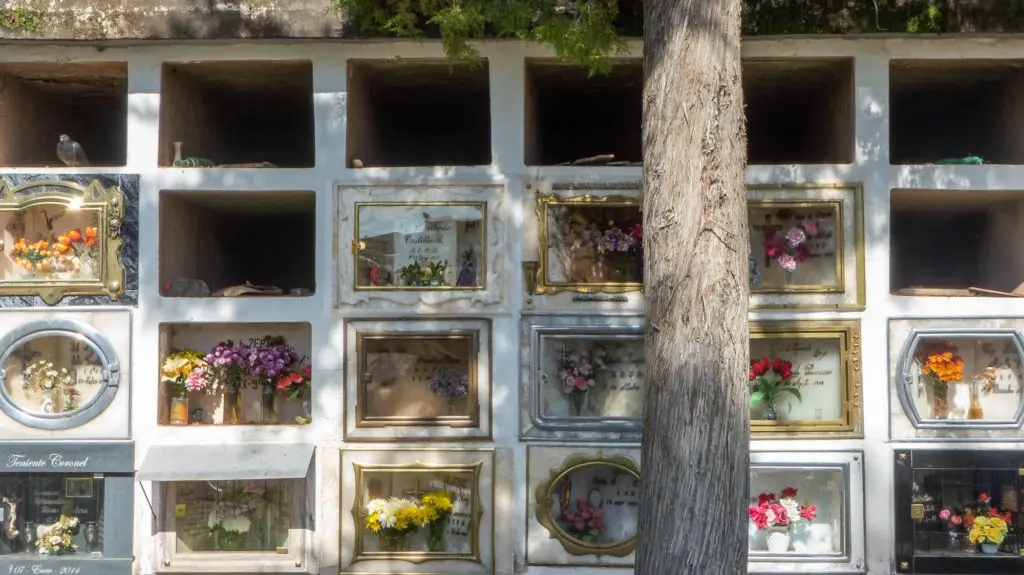
When renewal time rolls around, a sticker will be placed on the grave, reminding the family to pay. If for any reason your loved ones cannot afford to pay the bill, or your seven years is up and they don’t claim the body, you will be removed from the niche and put elsewhere in a mass grave.
This policy has caused controversy in the past when relatives have not realised the renewal date is coming up and their loved one has been moved. In these cases, it is very difficult to retrieve the body, even if payment is later made.
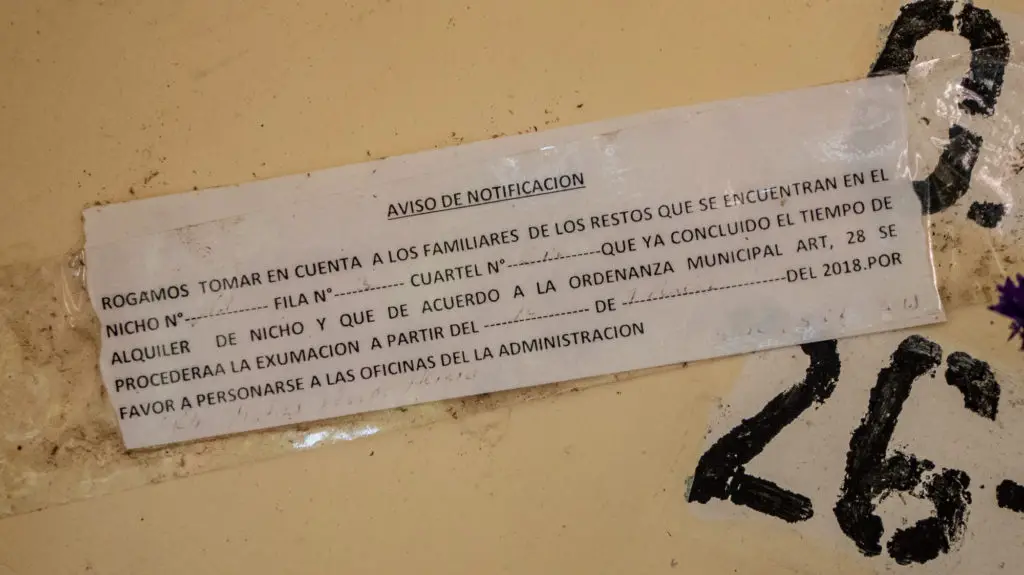
It is possible to make the graveyard your permanent afterlife home but generally, there are only two ways to do this. The first way stipulates that you must come from a respectful career where you will be buried with your cooperative.
During our visit to Sucre Cemetery, we saw graves for university professors, medical professionals and military personnel. In this instance, the institution will have bought a plot and will fill it with notable characters from their organisation.
The other way to ensure your forever space is by being rich enough to buy a plot. Many families which come from a long a line of wealth (often stemming back to the riches of the Potosí mines), will buy a space and build a crypt. This will then serve to hold the rest of the family who comes after.
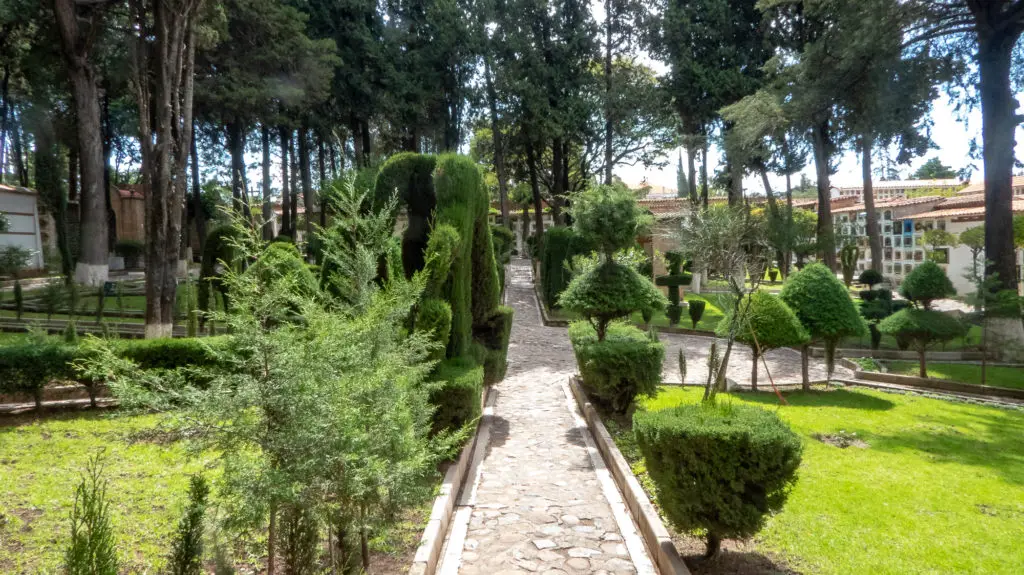
Opening hours
If you would like to visit Sucre Cemetery during your visit to Bolivia, the opening times are below. I have read that it is possible to arrange a tour around the cemetery when you arrive, although we did not do this. For a guided visit, speak to the staff at the entrance of the cemetery.
| Mon – Fri | 8 -11 am |
| 2 – 5.30pm | |
| Sat – Sun | 8 – 5.30 pm |
Would you visit Sucre’s General Cemetery?
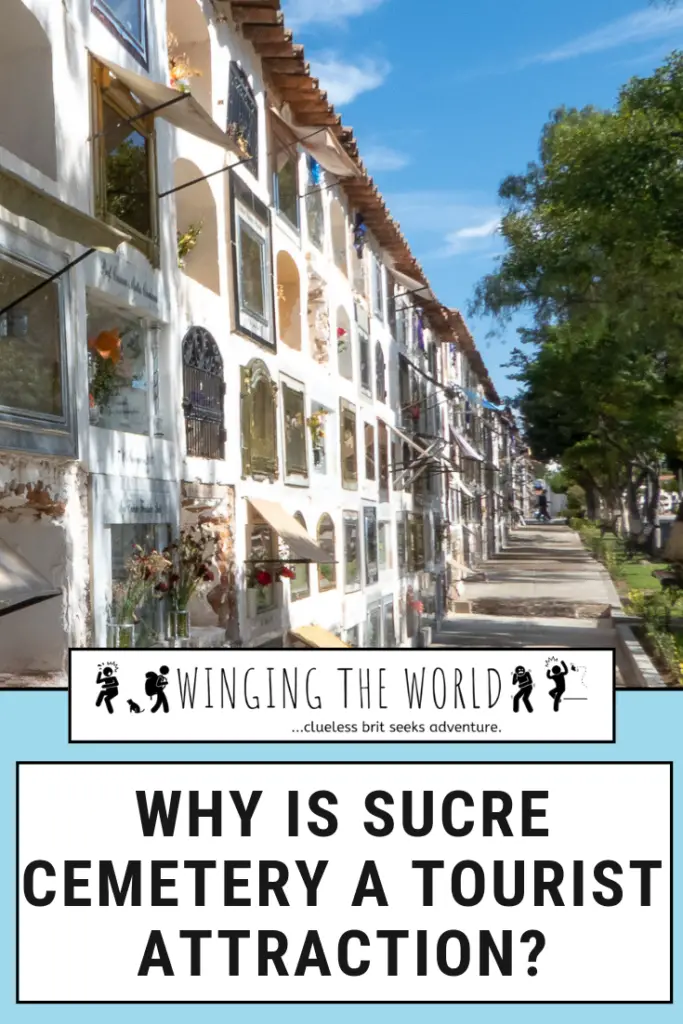
Love it? Pin it! 🙂

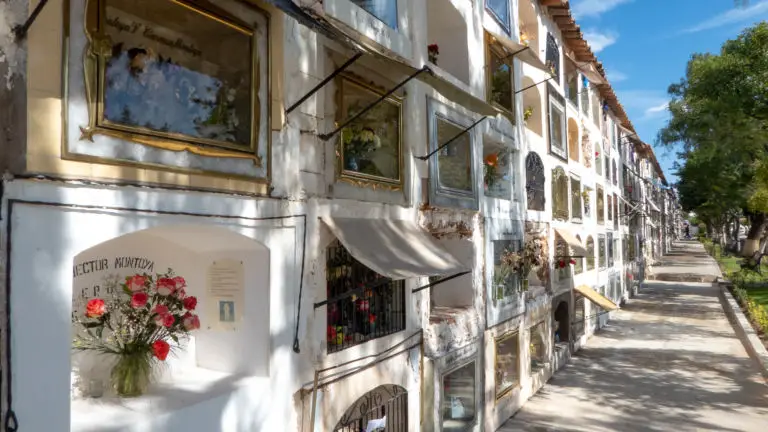
We definitely view death differently in the USA and UK. I think this view is healthier. I’ve always loved the idea of celebrating the dead rather than just mourning them (which is part of the ethos of Day of the Dead – PS: I love the photo that goes with the DotD section!!).
I also totally get your concerns over intruding on grievers. Although I’ve been to so many cemeteries now, and I’ve never felt welcome. I’ve always felt cemeteries were a good place to go to get away, and I always appreciate a well kept cemetery. One of the most beautiful ones we went to was Mirogoj Cemetery, just outside of Zagreb, which is also considered a to tourist attraction. There were people there with flowers, but it was also a place to go and relax. Less hanging out and chatting, but certainly a place to go and reflect and get away from the hustle and bustle of the city. And it was so pretty! Actually, I’ve honestly been to so many beautiful cemeteries it’s hard to name one stand out one because now like 10 more have jumped into my head. But I’ll stick with Mirogoj for now.
I’m gonna stop rambling and just say this one definitely looks and sounds well worth a visit and I’m glad you took a chance on it. Plus it led to this great post!
I completely agree. It is always something so hushed up in our culture and I don’t know why. I personally don’t think that refusing to talk about death never helps anyone grieve, I definitely prefer the South American way! I’d love to go to the Day of the Dead celebrations in Mexico, I love the idea of celebrating death as they do!
If I make it to Croatia any time soon I will definitely check out that cemetery! I am a big fan of anywhere that feels peaceful and acts as a nice break from a busy city!